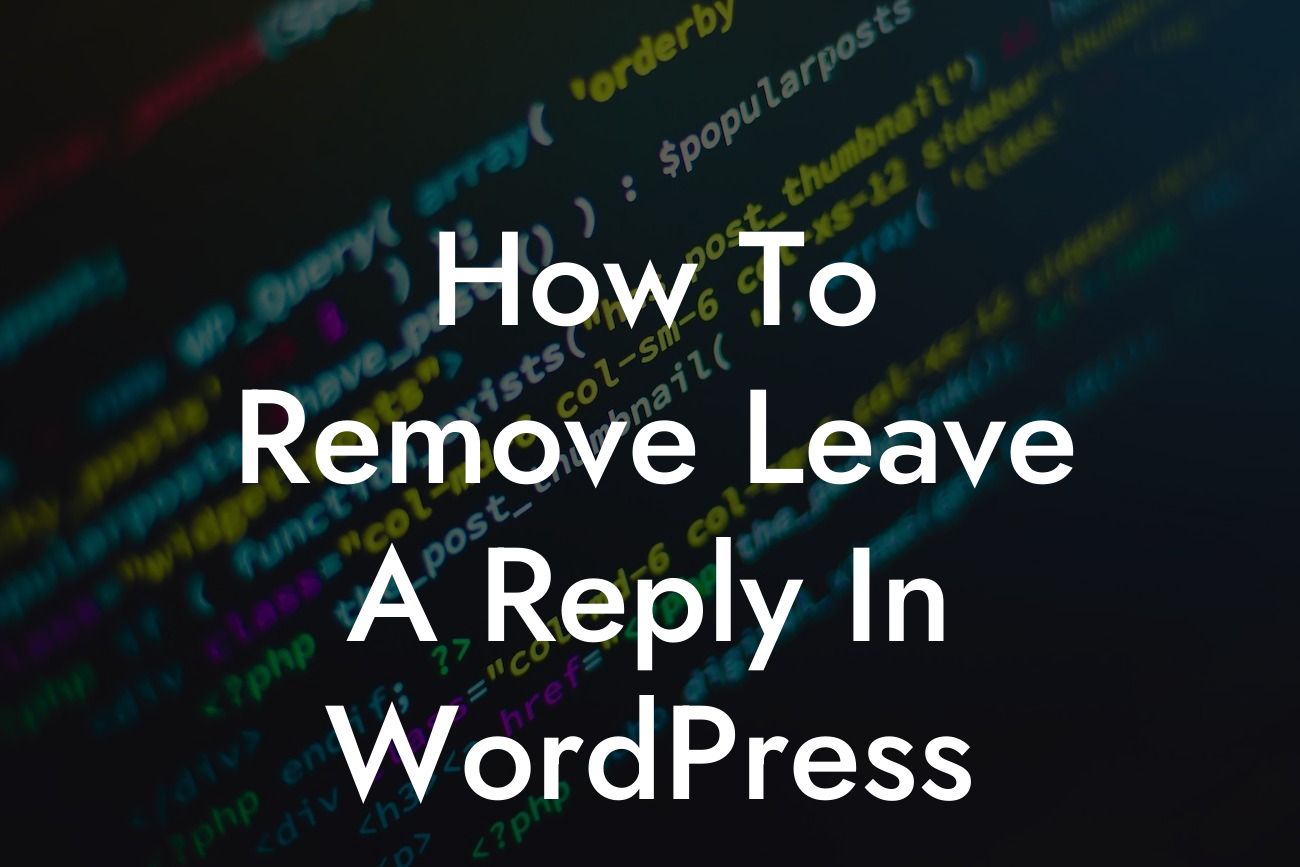Do you want to remove the "Leave a Reply" section in WordPress? Perhaps you have a static website and don't need comments or you want to create a more streamlined user experience. Whatever the reason, we have got you covered! In this article, we will walk you through the steps to remove the "Leave a Reply" section in WordPress. Say goodbye to unwanted comments and hello to a cleaner and more professional website. Get ready to take control of your WordPress site with DamnWoo!
Engaging Heading: Why Remove the "Leave a Reply" Section?
Having the ability to receive comments on your WordPress site can be advantageous for fostering engagement and generating discussions. However, it may not always be suitable or necessary for every website. Here are a few reasons why you might consider removing the "Leave a Reply" section:
1. Static Websites: If your website serves as a static portfolio or landing page, comments may not be relevant to your content. Removing the "Leave a Reply" section can help to declutter your site and provide a more focused experience for your visitors.
2. The Desire for a Clean Look: Some website owners prefer a minimalistic design without distractions. Removing the comment section can enhance the visual appeal of your site and create a more professional impression.
Looking For a Custom QuickBook Integration?
Engaging Heading: How to Remove the "Leave a Reply" Section in WordPress
Now that you understand the importance of removing the "Leave a Reply" section, let's dive into the steps to accomplish this.
1. Disable Comments Through WordPress Settings:
- Go to your WordPress Dashboard and navigate to Settings -> Discussion.
- Uncheck the "Allow people to submit comments on new posts" box.
- Save changes.
2. Disable Comments on Existing Posts:
- Open the post where you want to disable comments.
- In the Document panel, click on "Discussion".
- Uncheck the "Allow comments" box.
- Update the post.
Engaging Heading: How To Remove Leave A Reply In Wordpress Example
Let's consider a realistic example of a photographer's portfolio website. The website showcases stunning images and doesn't require comments. By removing the "Leave a Reply" section, visitors can focus solely on the visual content, creating an immersive experience that highlights the photographer's work. With DamnWoo's plugins, you can easily customize and tailor your WordPress site to suit your branding needs and provide a seamless user experience.
Now that you know how to remove the "Leave a Reply" section in WordPress, you're one step closer to achieving a cleaner and more professional website. Remember, DamnWoo offers a wide range of WordPress plugins specifically designed for small businesses and entrepreneurs. Explore our other guides to enhance your online presence and supercharge your success. Unleash the power of DamnWoo and create an extraordinary digital platform! Don't forget to share this article with others who might find it helpful.













